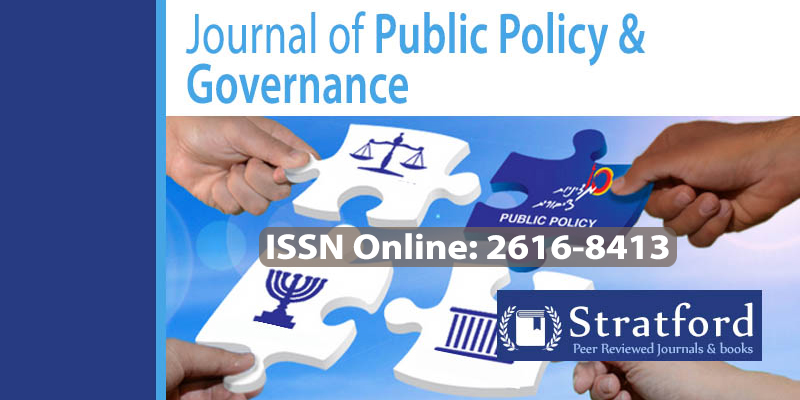Impact of Assurance and Responsiveness Dimensions on Customer Satisfaction in Higher Education Sector: A Case of Universities in Kenya
Keywords:
Assurance Dimension, Responsiveness Dimension, Customer Satisfaction & Universities in Kenya.Abstract
Universities are important vehicles in promoting educational goals in many countries all over the world. They supplement service delivery especially where the public universities would not have managed to cater for the academic needs due to overwhelming numbers of students seeking higher education services. The rapid increase of universities and their satellite branches has further led to competition for the best assurance and responsiveness dimensions on customer satisfaction in the education sector. The aim of this study was to investigate the assurance and responsiveness dimensions on customer satisfaction in higher education sector, taking into consideration the challenges faced by private universities in the country such as lack of funding among others.. The unit of the study was the registered students undertaking undergraduate studies in these universities. The target population comprised of undergraduate students in private universities in Kenya. The private universities considered for this study include Mount Kenya University, Catholic University, Strathmore University, Riara University, KCA University, and United States International University. A probabilistic technique was employed in which simple random sampling was used to identify the respondents. This was considered appropriate, as the numbers of students would be randomly obtained in respective universities. A sample of 384 was used and data was collected through structured questionnaires.
Keywords: Assurance Dimension, Responsiveness Dimension, Customer Satisfaction & Universities in Kenya.
References
Ader, H., Mellenbergh, G. and Hand, D. (2008). Advising on research methods: A consultant’s companion. Belgium. Johannes Van Kessel Publishing.
Agarwal, B. (2009). Basic Statistics, 5th Edition, New Delhi: New Age International.
Bailey, R. (2008). Design of comparative experiments. Cambridge University Press.ISBN 978-0-521-68357-9.
Commission of University Education (CUE) Report of 2015.
Daniel, B. (2012). Service quality in higher education: the students’ viewpoint. University of Manchester, p.1-123.
Faizan, A., Yuan, Z., Kashif, H., Kumar, N. and Ari, R. (2016). Does higher education service quality affect student satisfaction, image or loyalty: a case study of international students in Malaysian public universities? Quality Assurance in Education, Vol.24 (1), 70-94.
Faranak, K. and Behnaz, K. (2011). Service quality in higher education. Interdisciplinary Journal of Research in Business, Vol.1 (9), 38-46.
Ghulam, M., Khan, M. and Affaq, Q. (2014). Impact of service quality on customer satisfaction in higher education institutions. Journal of International Education Research, Vol.4 (3), 23-29.
Hasan, A., Rahman, A., Azleen, T. and Razak, M. (2011). Service quality and student satisfaction: a case study at private higher education institutions. Journal of International Business Research, Vol.1 (3), 32-46.
Hayan, D. and Mokhles, A. (2013). The impact of service quality on student satisfaction and behavioral consequences in higher education services. International Journal of Economy, Management and Social Sciences, Vol.2 (6), 285-290.
Jayanth, D. (2015). Measuring Student Satisfaction at Higher Educational Institutions. Saarbrücken: LAP LAMBERT Academic Publishing.
Jalal, M., Haim, A. and Ari, W. (2011). Service quality and students’ satisfaction at higher learning institutions: the competing dimensions of Malaysian Universities’ competitiveness. Journal of Southeast Asian Research, Vol.10 (9), 1-10.
Nejati, M. (2013).Frontiers of business, management and economics: an Interdisciplinary collection of managerial research findings and breakthroughs. Boca Raton, Florida: Universal-Publishers.
Nunnally, J. (2014). Psychometric Theory (2nd Ed.) New York: McGraw Hill.
Pang, N. (2016).Globalization: educational research, change and reform. Hong Kong: Chinese University Press Hong Kong Institute of Educational Research.
Parasuraman, A., Zeithaml, V. A., & Berry, L. L. (1988). SERVQUAL: A multi-item scale for measuring consumer perceptions of service quality. Journal of Retailing, 64, 12-40.
Parasuraman, A., Zeithaml, V. A., & Berry, L. L. (1985). A conceptual model of service quality and its implications for future research. Journal of Marketing, 49, 41-50. doi:10.2307/1251430.
Paul, G. (2014). Measuring service quality in higher education: a South African case study. Journal of International Education Research, Vol.10 (2), 131-143.
Raphael, M. (2014). An analysis of service quality measurements in tertiary colleges in Kenya: a case study of Zetech College. Kenyatta University Project, 1-148.
Rodrigues, L. (2013). Service quality measurement issues and perspectives. Hamburg: Anchor Academic Pub.
Sarah, W., Elias, K. and Lydia, K. (2011). Comparative analysis of business students’ perceptions of service quality offered in Kenyan Universities. International Journal of Business Administration, Vol.2 (1), 98-113.
Sekaran, U. (2003). Research methods for business (4th Ed). Hoboken, NJ: John Wiley & Sons.
Senakham, T. (2010).Customers' expectations of service quality in the Thai University fitness centers in Bangkok metropolitan area, Kingdom of Thailand. Spanish Fort: United States Sports Academy.
Uden, L. (2013). 7th International Conference on Knowledge Management in Organizations: Service and Cloud Computing. Berlin New York: Springer.
Wiersma, W. and Jurs, S. (2009). Research methods in education (9th Ed). New York: Pearson Education Incl.
Zeithaml, V. (2014). Delivering quality service. Berlin New York: Springer.
Zikmund, G., Babin, J., Carr, J. and Griffin, M. (2010). Business Research Methods, 8th Edition. Oklahoma: ISBN-10: 1439080674-13.
Zhou, M. (2011). Advances in education and management: international symposium, ISAEBD 2011, Dalian, China, August 6-7, 2011: proceedings. Heidelberg: Springer.


